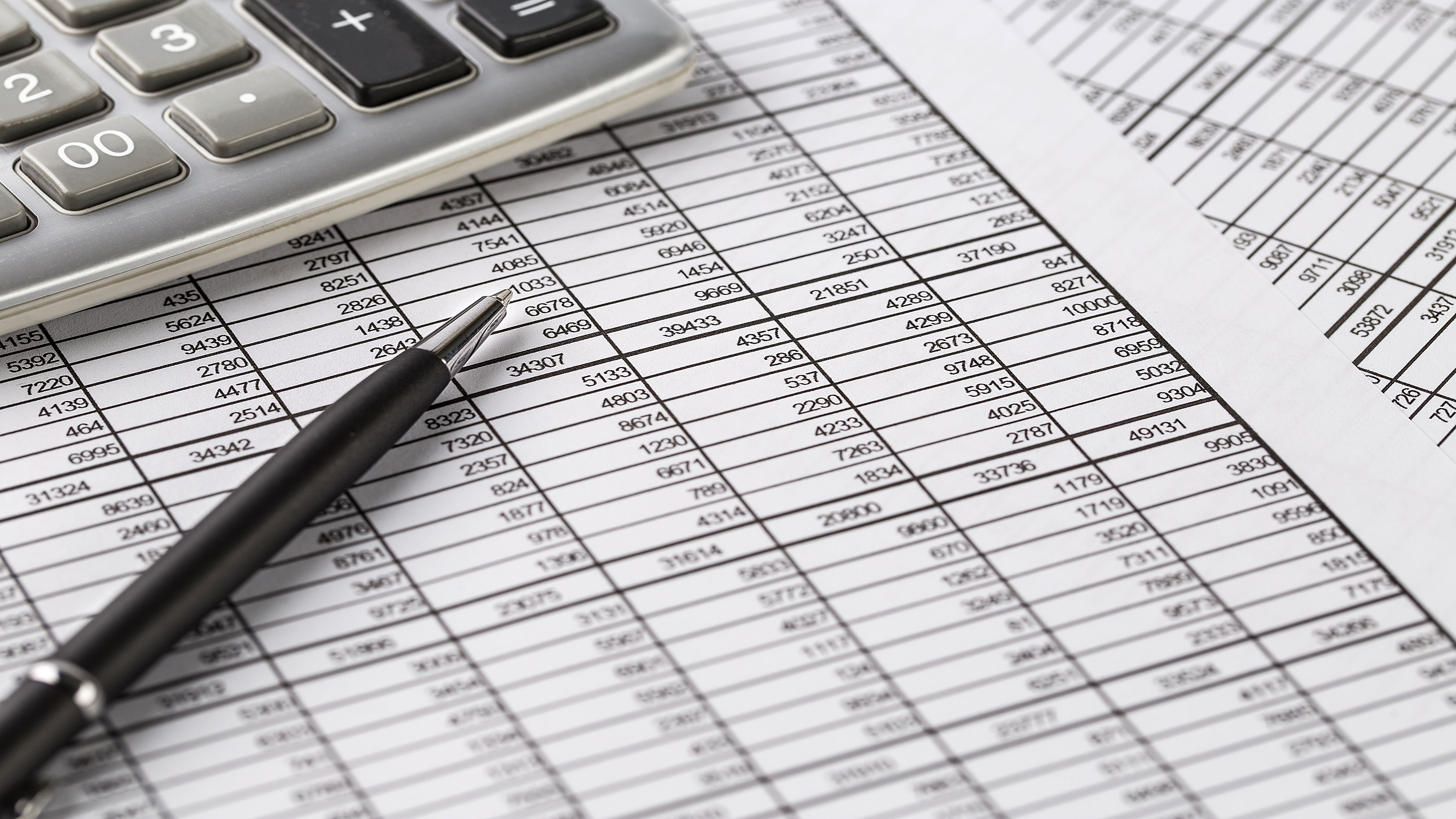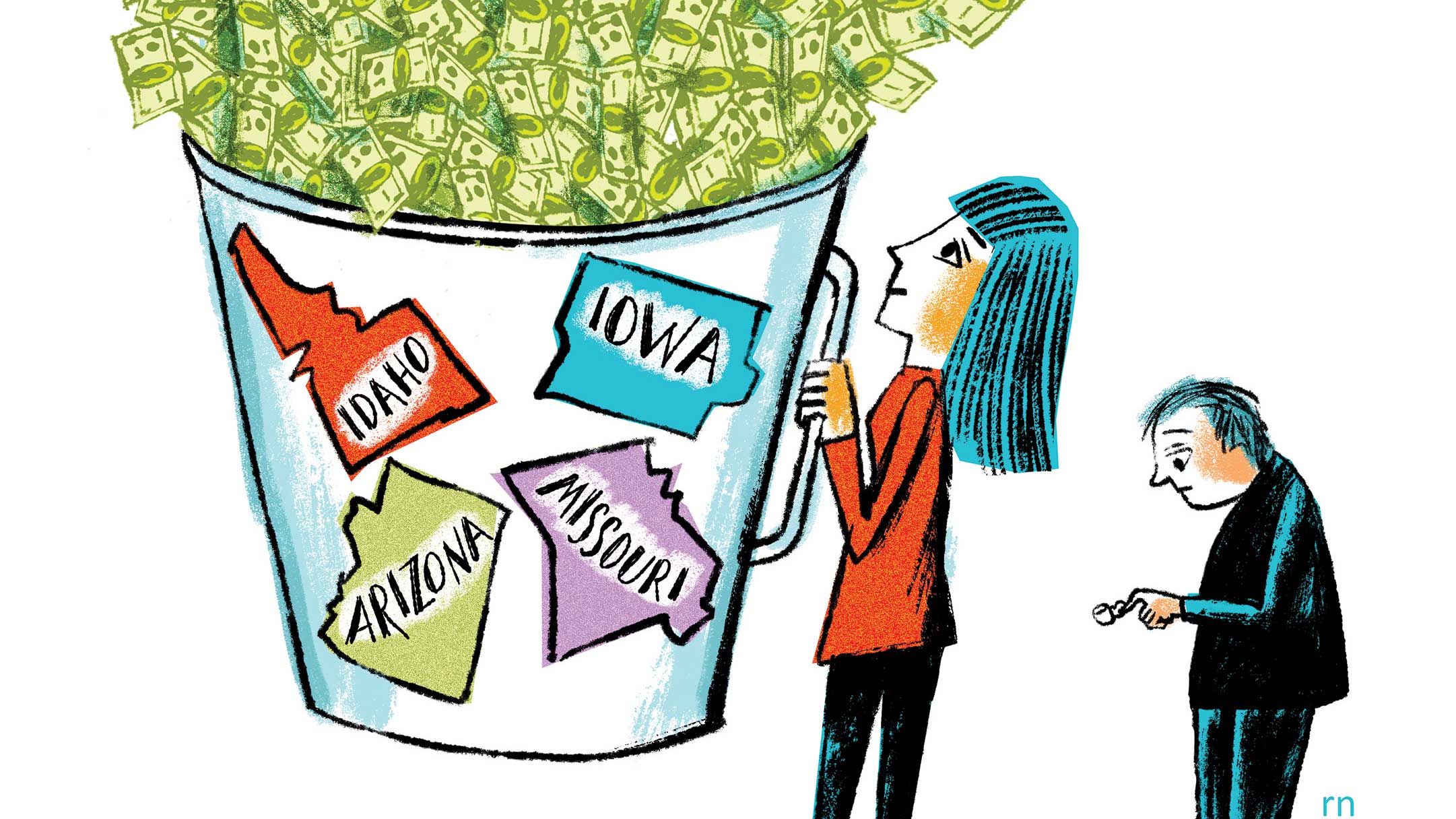Do-It-Yourself Pay Raise for the Holidays
You can avoid overpaying taxes -- and give yourself a bigger paycheck -- by adjusting your withholding.

Need a few extra bucks -- or a lot of them -- as we head into the holiday season?
Kiplinger reminds employees that most of you have the power to put several hundred extra dollars in your paychecks between now and the end of the year. And we don't mean by working overtime or taking on a second job. Simply tell Uncle Sam to back off a bit in biting into your paychecks.
| Row 0 - Cell 0 | Try Our Easy Withholding Calculator |
| Row 1 - Cell 0 | The Kiplinger Tax Center |
The potential for workers to beef up their paychecks is tantalizingly clear in the latest IRS statistics acquired by Kiplinger. The latest numbers show that so far this year 103 million Americans have received refunds triggered by their 2006 tax returns. The average refund: $2,291.
From just $107.88 $24.99 for Kiplinger Personal Finance
Become a smarter, better informed investor. Subscribe from just $107.88 $24.99, plus get up to 4 Special Issues

Sign up for Kiplinger’s Free Newsletters
Profit and prosper with the best of expert advice on investing, taxes, retirement, personal finance and more - straight to your e-mail.
Profit and prosper with the best of expert advice - straight to your e-mail.
This is proof positive that workers had too much tax withheld in 2006. And there is absolutely no reason to think that the overpaying isn't continuing apace in 2007. (Every year, the average refund amount keeps going up.)
That means the average taxpayer is having nearly $190 too much withheld from his or her pay every month. Wouldn't it make more sense to get that money when you earn it? Particularly at this time of year?
Fortunately, it's easy to tell your Uncle Sam to take less so your boss can put more in your paycheck.
You'll still get a refund
But what if you're addicted to springtime tax refunds? No problem. You've probably had plenty withheld so far this year to guarantee a refund next spring, even if you fix your W-4 to put an end to overwithholding for the rest of the year. Reducing withholding for the rest of 2007 might reduce the size of that check, but it won't wipe it out. And, it's sure to put money in your pocket now.
If you're an average refund receiver, for example, eliminating overwithholding for the last two months of the year will still leave you with a refund of $1,800 or so next spring.
To cut withholding, all you have to do is file a new W-4 form, Employee's Withholding Allowance Certificate, with your employer and increase the number of "allowances" you are claiming. You can claim an allowance for yourself, your spouse and your dependents, for example. Each allowance basically makes $3,400 of your annual income off-limits for withholding.
Claiming extra allowances on your W-4 will automatically push down withholding, which in turn will push up your take-home pay. You'll enjoy the instant gratification of a do-it-yourself pay raise.
Kiplinger's user-friendly calculator
Of course you can't just make up a number for your W-4. The IRS has a dense 19-page booklet with seven intimidating worksheets to guide you toward the right number of allowances to claim. The agency even offers a Web calculator to help. But it requires more than 30 entries.
To make things less painful -- and to encourage workers to set their withholding situation straight -- we've developed a simple, user-friendly calculator. Just answer three questions (you'll find the answers on your 2005 return), and we'll give you a solid idea of how many more withholding allowances you should be claiming. It's based on the premise that your financial life in 2007 is pretty much the same as in 2006. All sorts of things can affect the amount that should be withheld from your check: a new job, a new marriage, a new child, or a new house, to name a few.
But, if your financial life is shaping up to be pretty much the same this year as last, our calculator will quickly figure how many extra allowances you deserve. And, to give you the incentive to fill out a new W-4, we'll show you how much extra money you will put back in your paycheck by claiming the appropriate number of allowances.
If our calculator gets your attention, get a W-4 here or ask your company's payroll department for one. Work through the instructions, pinpoint the number of allowances you really deserve and file a new form with your boss. You should see the result next payday.
Editor's note: This story has been updated since it originally was published in September 2006.
Profit and prosper with the best of Kiplinger's advice on investing, taxes, retirement, personal finance and much more. Delivered daily. Enter your email in the box and click Sign Me Up.

-
 Changes Are Coming for This Invesco Bond Fund
Changes Are Coming for This Invesco Bond FundThe Invesco BulletShares 2026 Corporate Bond ETF's bonds will mature in 2026. Here's what investors should do.
-
 What Science Reveals About Money and a Happy Retirement
What Science Reveals About Money and a Happy RetirementWhether you’re still planning or already retired, these research-based insights point the way to your best post-work life.
-
 7 Retirement Planning Trends: What They Mean for You in 2026
7 Retirement Planning Trends: What They Mean for You in 2026From government shutdowns to market swings, the past 12 months have been nothing if not eventful. The key trends can help you improve your own financial plan.
-
 Kiplinger's Tax Map for Middle-Class Families: About Our Methodology
Kiplinger's Tax Map for Middle-Class Families: About Our Methodologystate tax The research behind our judgments.
-
 Retirees, Make These Midyear Moves to Cut Next Year's Tax Bill
Retirees, Make These Midyear Moves to Cut Next Year's Tax BillTax Breaks Save money next April by making these six hot-as-July tax moves.
-
 Estimated Payments or Withholding in Retirement? Here's Some Guidance
Estimated Payments or Withholding in Retirement? Here's Some GuidanceBudgeting You generally must pay taxes throughout the year on your retirement income. But it isn't always clear whether withholding or estimated tax payments is the best way to pay.
-
 How to Cut Your 2021 Tax Bill
How to Cut Your 2021 Tax BillTax Breaks Our guidance could help you claim a higher refund or reduce the amount you owe.
-
 Why This Tax Filing Season Could Be Ugly
Why This Tax Filing Season Could Be UglyCoronavirus and Your Money National Taxpayer Advocate Erin M. Collins warns the agency will continue to struggle with tight budgets and backlogs. Her advice: File electronically!
-
 Con Artists Target People Who Owe The IRS Money
Con Artists Target People Who Owe The IRS MoneyScams In one scheme, thieves will offer to "help" you pay back taxes, only to leave you on the hook for expensive fees in addition to the taxes.
-
 Cash-Rich States Lower Taxes
Cash-Rich States Lower TaxesTax Breaks The economic turnaround sparked a wave of cuts in state tax rates. But some say the efforts could backfire.
-
 The Financial Effects of Losing a Spouse
The Financial Effects of Losing a SpouseFinancial Planning Even amid grief, it's important to reassess your finances. With the loss of your spouse's income, you may find yourself in a lower tax bracket or that you qualify for new deductions or credits.